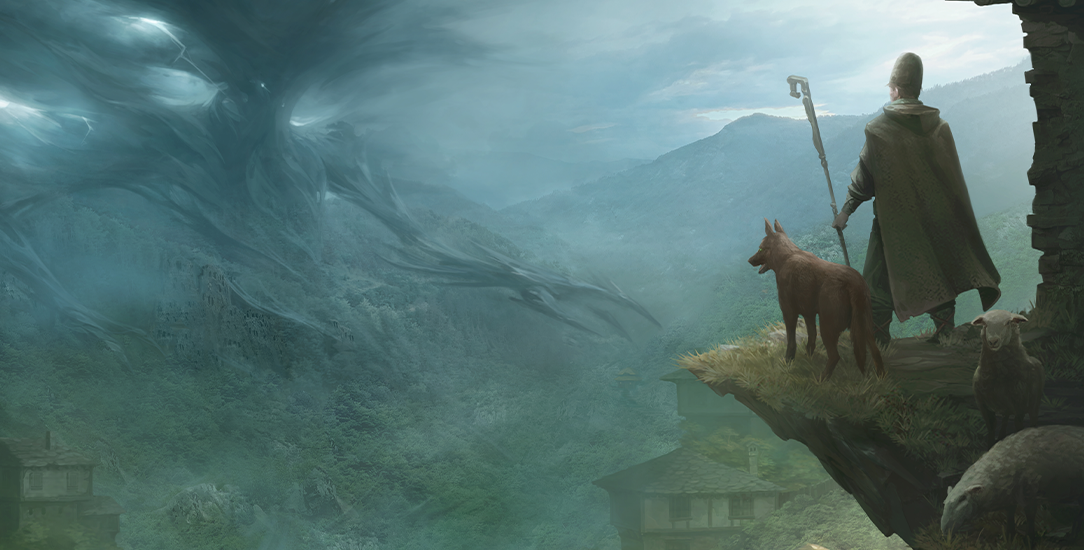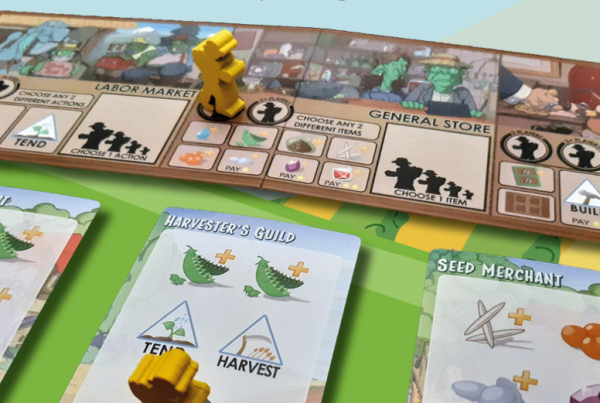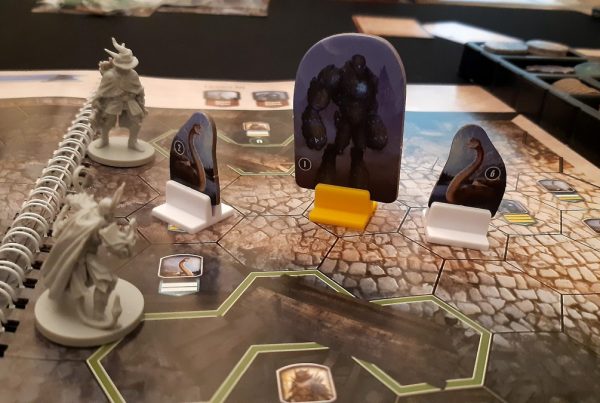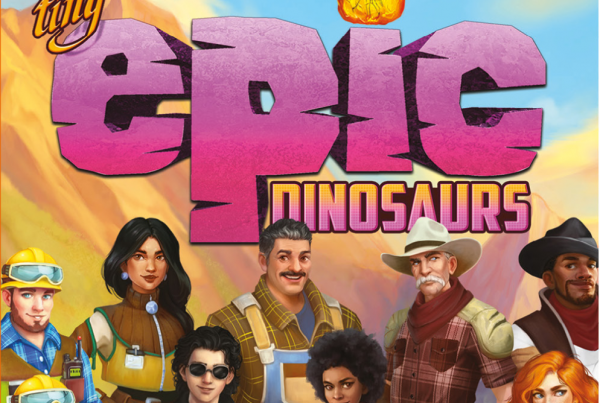The Devil’s Bridge is a standalone adventure for Dungeons & Dragons 5th Edition (5e) from a new startup called Yellow Madhouse. We caught up with the team following their successful Kickstarter campaign.
Hey folks! Why did you choose to design your adventure for Dungeons & Dragons — the weight of players, a love for the system, or something else?
We have all played D&D from a young age and we are very familiar with the system. On top of that adding the fact that our content would be very accessible to fellow adventurers, due to 5e’s popularity, made it a no-brainer. After all we started with the idea of popularising Slavic folklore through roleplay — and what better way than the world’s most famous roleplaying system? Also, the D&D community is a warm, welcoming and tight family, and part of our love for the game is the community itself.
Tell us about the real bridge and village that have inspired you. Where are they? What are some of the legends about them?
The real bridge is indeed called ‘The Devil’s Bridge’ and it was built sometime during the 16th century by a stone mason of unknown origin. The bridge was commissioned by Sultan Selim I, and it was supposed to replace an old Roman bridge built long ago. The bridge was part of an ancient road that connected the Aegean sea with Lowland Thrace, and the road itself is referred to as the Sultan’s Trail, which stretches from Istanbul to Vienna.
The most prominent legends are:
- The supposed mason couldn’t erect the bridge so he had to make a ‘sacrifice’. The mason bound the shadow of an innocent soul in the bridge and thus the stonework stood, and the dark deal was sealed.
- An actual person was sacrificed and placed in the stonework to appease Satan, as the devil kept destroying the foundations of the bridge.
- The mason’s deal required him ‘to hide the devil’s image in plain sight’, so that people marvelling at its splendour would be also praising the devil. This is of the most chilling aspects of the bridge – you can actually see the image of a horned devil when looking at the bridge and its reflection in the waters below it.
This whole ‘sacrifice’ and ‘shadow binding’ business is in fact an echo of real rituals that took place in medieval Bulgaria and across Slavic Europe, where people would be put into stoneworks in order to make them ‘stronger’. Mad, isn’t it?
As to the real village which inspired us, it is called Dyadovtsi (‘Grandfathers’). The settlement is nestled in the Rhodope mountain range in Bulgaria, and the river Arda flows by it. The village has been abandoned for a long while and its ruins are haunting. It looks as if the people didn’t leave gradually, but rather vanished into thin air at the same time, with no warning or explanation. As if something terrible happened and the villagers were all wiped out where they stood, leaving all remains behind. It reminded us of the ruins of a fantasy village struck by a dark curse with no heroes around to save it. Hopefully, in our adventure, the village of Ardino will meet a different fate… or will it? It’s all in the hands of the players!
The adventure is inspired by Bulgarian folklore (where our social manager is from, funnily enough). Why did you pick that country specifically — is it where you’re all from?
The adventure is set in the fictional land of Rodozem, a concept that we have worked on over the last few years. Rodozem is a land inspired by Slavic folklore, myth and legend. We decided to introduce Rodozem through a series of adventures leading up to a campaign setting later down the line. The Devil’s Bridge is our first adventure, and it is indeed inspired by many Bulgarian tales. The core team members in Yellow Madhouse are all from Bulgaria, so naturally our own folklore is easier to pull from, and much easier to decode as we all speak the language in which it’s told and recorded. Though we have delved deep into our roots, and we have drawn our inspirations from all Slavic folktales and legends, from Russia to Poland and back again. Wherever we can find any obscure, unheard or untold tale, we aim to bring it back to life.
Is The Devil’s Bridge designed to slot into other fictional settings, or do games need to be set in the Rodozem universe?
We have woven details from our fictional world of Rodozem into the story. However, we’ve designed the adventure in such a way that if someone would like to integrate The Devil’s Bridge into their own setting, it’s absolutely possible. They would just have to adjust some of the details and make the village of Ardino their own.
Is this the first product Yellow Madhouse has made for roleplaying games?
Yes, and it will definitely not be our last! We have been working ‘off the grid’ if you will, or without any public announcement, for years from our homes and in our spare time. We were delving deep into the stories of old, gathering the lore, myth and legend, and meeting the monsters and curious creatures that populated the imaginations of Slavic peoples.
Originally we started compiling our work in early 2014, and it is now that we finally have our first adventure in the making. We wanted to ensure we have all the materials we would need before embarking on our journey.
Have you worked in the gaming industry before?
These are our first steps in being a part of the gaming industry professionally and as a collective. We all come from different backgrounds which help us in our undertaking: accounting, management, programming, history, art, psychology, anthropology. And most importantly, all of us are dedicated roleplaying fanatics! This is our quite obvious ‘secret’ weapon: our passion for roleplaying and storytelling. We have been blessed to come together as a perfectly balanced and well-rounded party in real life, each of us shining in their respective expertise, and all of us supporting and inspiring each other. So far our first steps as professionals in this industry have been a crazy adventure that has taught us so much.
Though we have all had small roles in gaming since we were young. Some of us were game testers, others organisers and game masters for LARP (live-action roleplay) events, some even delved into mini/dice production!
Is working as part of Yellow Madhouse your main occupation?
Originally we all left our jobs in order to move in together and start working on this project. We have since taken local part-time jobs to help us pay the bills, but the rest of the time we dedicate to Yellow Madhouse. It is our dream to have Yellow Madhouse as our main occupation, and this will hopefully happen with time!
How does Slavic mythology differ most from the mythologies we’re more familiar with in the rest of Europe and the US?
This is a question that can prompt an entire lecture, but we’ll try to be brief.
One prominent trait is the sort of pantheistic reality of Slavic myth; the unseen supernatural world around us is full of spirits and ancient magic, you only need to look a bit closer to see it.
Another major side to it is that there isn’t a ‘Slavic Mythology’ as such, at least not in the conventional sense. The word ‘Slav’ supposedly derives from ‘slovo’, which means ‘speech’ or ‘word’. So it is more of a folklore tradition passed down by word of mouth, in the form of tales and songs, rather than in texts and books (which is also one of the reasons why it’s so hard to hone in on exact tales and legends, as nobody bothered to write anything down). There isn’t a unified Slavic pantheon, which complicates things further. In other mythologies the people of a certain area would agree on the general name, duty and trait of a ‘supreme being’, such as Zeus or Odin for example. Not with the Slavic people though; every name, trait and even symbol is intertwined with another, every god and their duties vary from place to place. So in most cases it turns out that we all researched the same god ten times, when we thought we were researching ten different gods… and that’s so much fun.
Perhaps one of the more prominent traits is duality. However, it differs from the Christian tradition, for example, where this is usually expressed as a dichotomy between opposites (light and darkness, good and evil, order and chaos); instead, in Slavic folklore, this dualism is inherent and internalised. Most of the magical creatures could be either benevolent or malevolent, or even both at the same time. Take for example Baba Yaga: in some instances she is the clear antagonist, while in others she aids the protagonist, albeit in her own morbid manner. This quality of our sources of inspiration helps us build interesting and multidimensional characters and sets this sort of gritty, realistic atmosphere of uncertainty. Like in real life, sometimes it can get hard to identify a clear villain or hero.
In your Kickstarter campaign you mention that the Devil’s Bridge setting blends together Slavic folklore traditions from different countries and is inspired by medieval Balkan culture, Bulgarian folklore and Renaissance culture and also incorporates elements from Russian, Polish, Serbian and Macedonian folklore. Can you give us examples of how these influences have materialised within your project? What creatures are native to each country?
Firstly, we have aimed to create a homogenic fantasy setting that borrows from all of the different Slavic traditions. So it might be hard to just pull out a single clearly-defined example that stems from one particular culture. One also has to keep in mind that many of these traditions are quite intermixed to begin with. In essence we’ve searched for common Slavic archetypes and tried to represent them in the best possible context through our characters and monsters. Having said that, here are a few examples.
The architecture of our fictional village of Ardino is influenced by the Bulgarian Revival Period — Bulgarian Renaissance and Baroque from the end of the 19th century. For the more rich and complex edifices we have used examples from the Old town in Plovdiv and the Samovodska Charshia in Veliko Tarnovo. For the simpler houses we have used examples from the Rhodope mountain region of the same period.
Another example is the bogatyr from the Eastern Slavic tradition (Russia, Belarus, Ukraine). These are the eastern counterparts of the west European wandering knight. Noble, strong men who would dedicate their lives to the cause of protecting the people of their land from intruders, both natural and supernatural. The bogatyr are pious and patriotic paragons of bravery, strength and courage. We have created an amalgamation between these archetypes — the bogatyr, the paladin and the feudal knight — and we came up with one of the knightly orders in Rodozem. They are called the Knights of the Copper Scale and are the fierce and noble protectors of the Queendom of Whirlwind (Ardino is set in its province.)
A supernatural example would be the talasum, a spirit of controversial nature and alignment. It is a creature that is found throughout the Balkans under different names and forms. The major consistent trait is that it is bound to a structure. Sometimes it can be benevolent, a protector of the home (often called ‘stopan’ too). However, we have chosen a darker aspect of the creature, depicting it as a malevolent and devious fiend. We have delegated its friendlier archetype to another creature, but I shall spoil no more.
One thing we’ve been struck by when creating roleplaying modules is the complexity of accommodating player choice — for example, establishing a framework for what happens when the party doesn’t decide to storm the castle, or whatever it may be. What’s been the biggest challenge, narratively, in creating The Devil’s Bridge?
Absolutely true. As game developers we are storytellers who have to write a story without knowing our protagonists. I think one of the hardest things was to strike the balance between railroading the story and completely derailing it. The finest (and hardest) tweaks are provoked by the urge to create valid and difficult choices for the players, making it so that they feel the repercussions of their actions, and the weight of their choices. Moreover, the hard part is to simply and coherently express those ideas to the GM, so that they may accurately develop the story and its outcomes as we intended them when designing the adventure. Another challenge is writing a coherent story while maintaining a ‘choice-friendly’ adventure. Oh, yeah, and also doors… Turns out doors are hard to deal with from a designer’s point of view, not just players’ or GM’s.
The monsters and beings populating The Devil’s Bridge seem genuinely original and fascinating. We can’t wait to get our Kickstarter book! How straightforward was it converting these legends into monsters to battle — did you need to embellish or change their behaviour much from the stories they feature in?
This was actually one of the greatest challenges mechanically. It’s difficult to take something so obscure, and even sometimes self-contradicting, and turn it into a creature with concrete but also authentic abilities with a balanced stat block on top. Our usual approach in these sort of predicaments is simple and so far works well. It goes roughly as follows:
- We identify all the similar creatures and group them.
- We then identify all of the archetypes/abilities/functions these creatures share and the ones which vary.
- We pick the archetypal traits that the creature best represents or suits and allocate them to it.
- We then test the hell out of it.
This is why we had to come up with completely unique mechanics in most places. I think even old-school D&D maniacs will be surprised by the unexpected encounters and will have to get creative and put their thinking hats on while killing our poor babies.
If someone wanted to learn more about Slavic folklore, where would be a good place to start?
Wikipedia… just joking. We have the honour to collaborate with docent-doctor Vihra Baeva from the Bulgarian Institute of Ethnology and Folklore Studies with Ethnographic Museum, Bulgarian Academy of Sciences. She is a fountain of knowledge when it comes to folklore and her guidance and expertise is at the foundation of our Yellow Madhouse. Without her we wouldn’t be able to do justice to our inspirations. Docent-doctor Baeva has written books on the topic which we highly recommend: Zmey, Zmeytsa, Lamya and Hala (translated: Dragon, She-Dragon, Serpent and Gale) is a collection of more than 400 fairytales, songs, legends, sagas, proverbs and riddles. A few other recommendations by the same author: Between the Worlds, People, Spaces and Rituals; and lastly, Bulgarian Folklore.
Other sources we drew from are the Encyclopedia of Russian and Slavic Myth by Mike Dixon-Kennedy; Slavonic Fairy Tales (by John T. Naake), collected and translated tales from Russia, Poland, Serbia and Bohemia. Chronica Slavorum by Helmold, written in 1171, is probably one of the more detailed texts with regards to the Slavic people and their customs. These are a good place to start, though we must mention that our primary inspirations come from the tales we were told as children by our grandparents and by our history teachers.
It’s worth mentioning that we have searched both academic and fairytale texts alike when looking for answers and inspirations. Because Slavic people didn’t write anything down, we rely on the early Christian priests who recorded the customs and traditions of the Slavic people.
Your Kickstarter campaign has absolutely nailed its goals. What’s next? Will you produce more adventures in Rodozem?
Rodozem is a setting we want to develop and put out into the world. Not only as a source book but as a collected work of Slavic-inspired tales, cities, heroes and monsters. A book we can be proud of and hopefully inspire others with.
Initially we started with the idea of releasing a campaign setting, though that changed quickly when we realised we bit off more than we could chew at the time. We then decided to test the waters first by releasing The Devil’s Bridge, to see if there is any interest in the obscure traditions and tales of our Slavic ancestors. We’re definitely planning on releasing more adventures, paving the way for our campaign setting by introducing the many new monsters and mechanics we have been working on during the past six years. Honestly, we cannot wait to finish and publish The Devil’s Bridge so we can show you our next one!
Find out more about Yellow Madhouse and The Devil’s Bridge at www.yellowmadhouse.com






